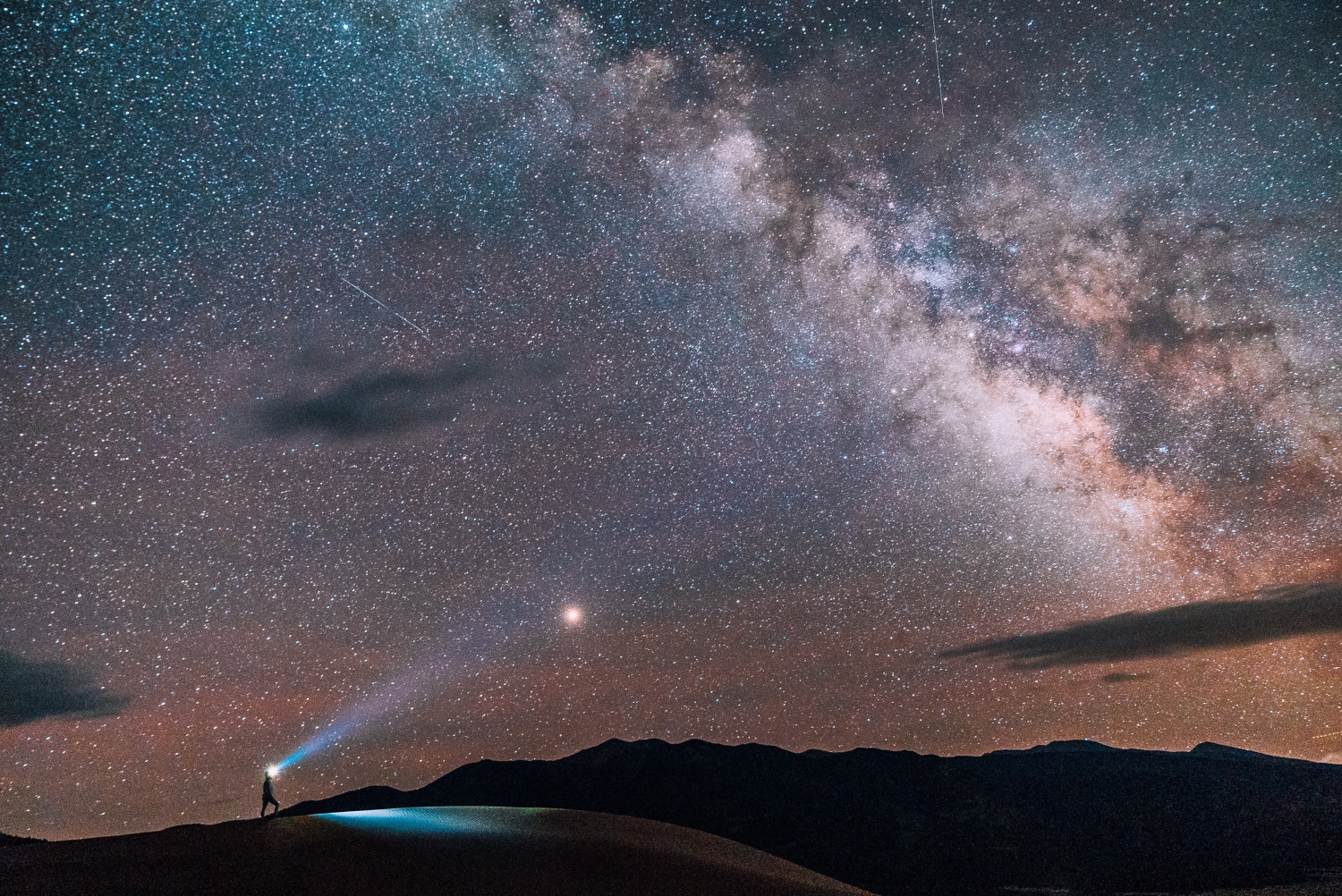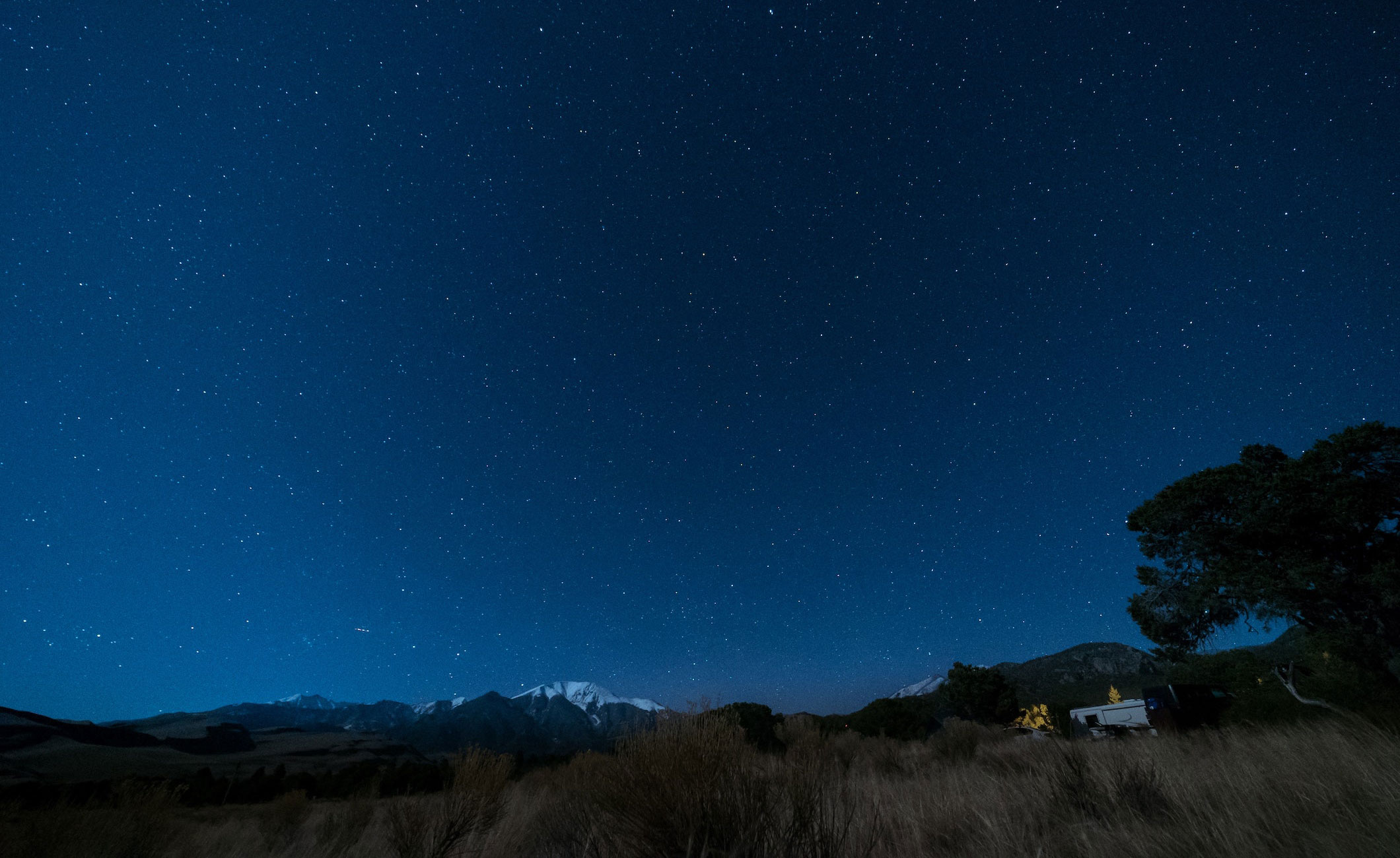The Dark Sky Park
The Great Sand Dunes National Park and Preserve spans over 30 miles and contains over 5 billion cubic meters of sand to create what is essentially the largest sandbox in North America. At no surprise, this geologic wonderland finds itself on most visitor’s to-do lists because of its scenic beauty, diverse landscapes, and many ways for each visitor to enjoy. What many don’t realize, is that half the park’s fun can be found after dark! After sunset, the park transforms into a majestic setting illuminated by the night's sky.
An Illuminating Experience
It’s no secret that National Parks hosts some of the darkest skies in the country. In some areas of the Great Sand Dunes National Park, it's possible to see thousands of stars in one night! By contrast, those stargazing near cities will likely see fewer than 500 stars at night. After the sun sets, the Great Sand Dunes National Park transitions into the Dark Sky Park, an experience illuminated by the moon, solar system, and meteorites. The neighboring Sangre de Cristo mountains towering next to the park effectively shelter nearby light pollution providing for a perfect venue for stargazers to enjoy a largely unobstructed view of the stars; not to mention the assembly of hooting owls, singing toads, and feel of fresh mountain air.
Aside from the view, other senses will pick up a hodgepodge of high elevation nocturnal behavior. The quiet mountain air acts as a stage for the likes of owls, toads, and crickets who are known to be most vocal at night. Be on the lookout for other animals who enjoy nighttime exploration such as salamanders, coyotes, elk, and more. Alamosa and the San Luis Valley are full of nature preserves, open space ranches, and animal refuges making it a top destination for wildlife lovers.
Half the Park is After Dark!
Interested in astrophotography?
We can help! Sign up below to learn more about bringing the right camera gear, understanding lighting and planning your shoot.









